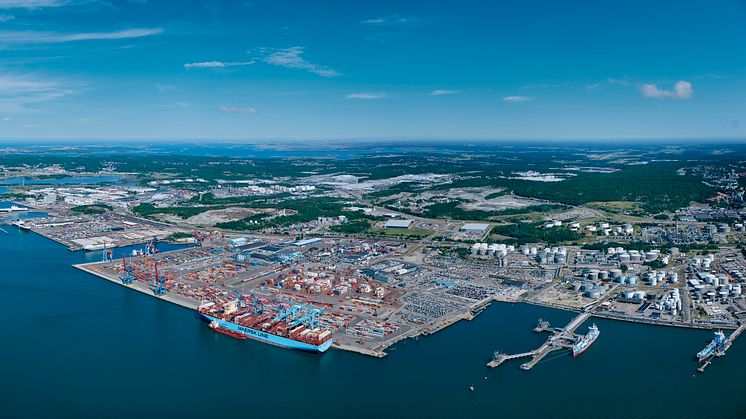
Press release -
Container traffic at the Port of Gothenburg on the rise – despite uncertain market situation
The Swedish container market had a slight downturn during the first half of 2019 with a one per cent fall, but the Port of Gothenburg is reporting a steady rise in both market share and volume. Between January and September this year, the figure stood at four per cent, due largely to continued influx of hinterland rail volumes at the port.
Container traffic continues to grow at the Port of Gothenburg following a downturn in 2016-2017. The recovery was particularly noticeable in 2018 with road-based traffic from western Sweden and its hinterland gradually returning to the Port of Gothenburg. The trend continued into 2019, attributable in the main to higher volumes from the rest of Sweden. This can be seen in the Q1-Q3 statistics published recently by Gothenburg Port Authority.
The rise in freight flows from the whole of Sweden to the Port of Gothenburg is borne out by strong figures for rail-based container traffic. The vast majority of inland freight arrives at the Port of Gothenburg by rail, with volumes increasing by 20 per cent between January and September. Long-distance volumes from northern and eastern Sweden are also making a comeback.
“The Port of Gothenburg serves the whole of Sweden and the current trend is underpinned by our continued nationwide upturn in the container sector. The focus at the Port of Gothenburg is on ensuring industry has uninterrupted access to external markets, despite an uncertain business climate and a cautious domestic market,” said Elvir Dzanic, Gothenburg Port Authority chief executive.
Slowdown in the ro-ro segment
Even if uncertainty in the economy has yet to make its mark on Port of Gothenburg container figures for this year, it has impacted on volumes in a number of the port’s other freight categories. From historically high levels in recent years, the port’s intra-European ro-ro traffic fell by five per cent in January-September. The downturn is most noticeable on the Belgian routes in the wake of the unusually high volumes reported by the automotive industry in 2018.
Fewer imported cars
The throughflow of new cars at the Port of Gothenburg fell by eight per cent compared with the previous year, due mainly to a decrease in imports as a result of the fall in new car sales in Sweden during the same period. On the plus side, a turnaround was noted in September with 26,500 cars handled.
Energy products down
Handling of oil and energy products was down ten per cent at 15.9 million tonnes for January-September. The fall during the first half of the year was countered by an increase of five per cent during the third quarter, driven by higher crude oil inventories and the fact that the refineries are back at full production following the maintenance shutdown earlier in the year.
Port of Gothenburg freight volumes January – September 2019
| January-September 2019 | January-September 2018 | Change % | |
| Containers (TEU) | 582,000 | 561,000 | 4% |
| Rail (TEU) | 345,000 | 287,000 | 20% |
| Ro-ro units | 419,000 | 441,000 | -5% |
| New cars | 193,000 | 210,000 | -8% |
| Energy products, m tonnes | 15.9 | 17.7 | -10% |
| Cruise ship calls | 57 | 34 | 68% |
| Ferry passengers | 1,463,000 | 1,355,000 | 8% |
Topics
Fact file: Port of Gothenburg
The Port of Gothenburg is the largest port in the Nordic region. 30 per cent of Swedish foreign trade passes through the Port of Gothenburg as well as half of all container traffic.
The Port of Gothenburg is the only port in Sweden with the capacity to receive the world's largest container vessels and has the broadest range of shipping routes within and outside Europe. The 25 rail shuttles that depart each day mean that companies throughout Sweden and Norway have a direct, environmentally smart link to the largest port in the Nordic region. The Port of Gothenburg has terminals for oil, cars, ro-ro, containers and passengers.


